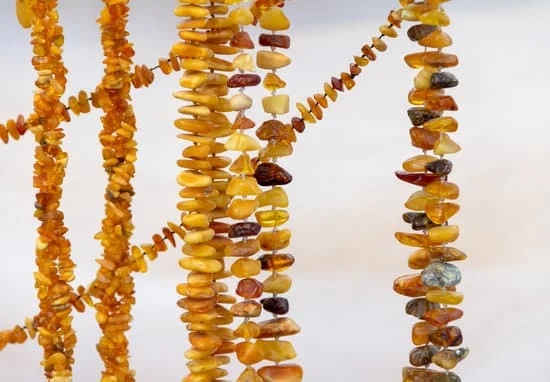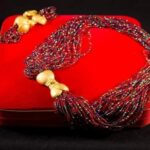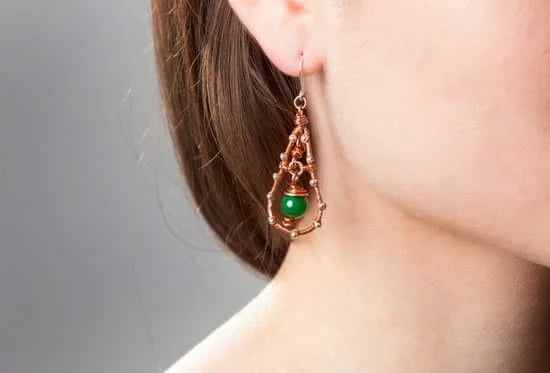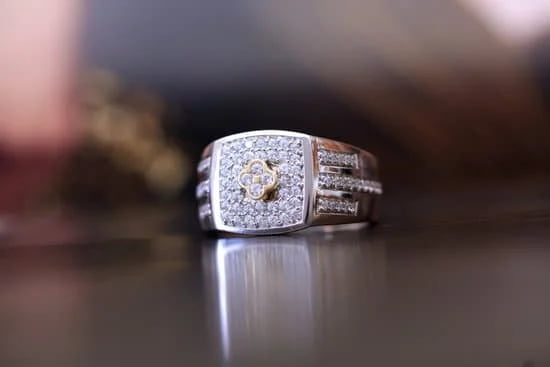What is the history of cameo jewelry? The art form of cameo jewelry has a rich and fascinating history that dates back to ancient times. From its origins in ancient Greece and Rome to its resurgence during the Renaissance and its enduring popularity in the modern era, cameo jewelry has captivated people with its timeless beauty and intricate craftsmanship.
The history of cameo jewelry is a story of artistry, symbolism, and cultural significance. With each piece representing a unique blend of historical themes, personal stories, and artistic expression, cameo jewelry continues to be treasured around the world.
In this article, we will delve into the origins of cameo jewelry, tracing back to ancient civilizations such as Greece and Rome. We will explore how this classic art form experienced a revival during the Renaissance and became a symbol of elegance and sophistication in the Victorian era.
Additionally, we will unravel the intricate process behind creating cameo jewelry and discover how contemporary designers are putting a modern spin on this traditional style. Join us as we embark on a journey through the captivating history of cameo jewelry, uncovering its enduring appeal and cultural significance.
The Origins of Cameo Jewelry
Ancient Greek Cameo Jewelry
In ancient Greece, cameos were initially carved from semi-precious gemstones such as onyx and agate. These intricate carvings often depicted mythological figures, animals, and scenes from everyday life. The Greeks also utilized multi-layered stones to create contrasting color combinations, adding depth and dimension to their creations.
Roman Influence on Cameo Jewelry
The Romans further developed the art of cameo carving by introducing new techniques and materials. They began using larger gemstones and incorporating more elaborate designs into their cameos. During this time, cameo jewelry became a symbol of wealth and status, with emperors and aristocrats commissioning lavish pieces to display their power and prestige.
It was during these early periods that cameo jewelry established itself as a coveted adornment, embodying both artistic expression and cultural significance. The intricate craftsmanship and timeless beauty of ancient Greek and Roman cameos continue to inspire contemporary designers, ensuring that this classic style will endure for generations to come.
The Renaissance Revival
During the Renaissance period, cameo jewelry experienced a revival and became a popular fashion accessory among the wealthy and royal. This period, which spanned from the 14th to the 17th century, saw a resurgence in interest in classical art and culture. As a result, cameo jewelry, with its ties to ancient Greek and Roman traditions, became highly sought after.
The Influence of Classical Art
The rediscovery of ancient Greek and Roman artifacts during this time led to an increased fascination with classical art forms. Cameo jewelry, with its intricate carvings depicting mythological figures, historical events, and portraits of emperors and important figures from antiquity, captured the attention of Renaissance-era patrons. The popularity of cameo jewelry can be attributed to its connection to classical art and the desire of individuals to showcase their appreciation for ancient cultures.
Cameo Jewelry as Symbolic Ornaments
In addition to its aesthetic appeal, cameo jewelry held symbolic significance during the Renaissance period. It was often worn as a symbol of status and wealth, with elaborate pieces crafted for royalty and aristocrats.
Cameos were also used as personal emblems or talismans, carrying meanings that ranged from love and devotion to political allegiances. The revival of cameo jewelry during the Renaissance era not only reflected an appreciation for classical art but also served as a means of self-expression and social distinction.
The Craftsmanship Behind Renaissance-Era Cameo Jewelry
The 15th and 16th centuries saw a flourishing of craftsmanship in Europe, particularly in Italy where many renowned workshops specialized in creating exquisite cameo jewelry. Skilled artisans honed their craft in carving gemstones such as sardonyx, agate, or shell to produce intricately detailed cameos. The process involved meticulous carving techniques to create relief images on the surface of the gemstone or shell.
These masterpieces required immense skill and precision, further adding to their allure and value. The Renaissance era marked a period when cameo jewelry was not just admired for its beauty but also valued for the craftsmanship involved in its creation.
Cameo Jewelry in the Victorian Era
During the Victorian era, cameo jewelry experienced a resurgence in popularity, with symbolism and popular depictions playing a significant role in its appeal. Queen Victoria herself was a great admirer of cameo jewelry, further adding to its prestige and desirability during this time period. The intricate carvings on cameos often depicted scenes from classical mythology, biblical stories, or portraits of loved ones, making them highly sentimental and meaningful pieces.
One of the most popular motifs during the Victorian era was the depiction of Greek and Roman mythology. Cameo carvings often featured gods and goddesses such as Apollo, Athena, and Venus, as well as mythical creatures like Cupid and the Muses. These classical themes appealed to the romantic ideals of the time, adding an air of elegance and sophistication to the jewelry.
Another common theme in Victorian-era cameo jewelry was portraiture. Women would often commission cameos with their own likeness or that of a loved one as a way to commemorate special occasions or relationships. These personalized pieces were cherished for their sentimental value and became treasured family heirlooms passed down through generations.
The symbolism associated with cameo jewelry during the Victorian era extended beyond just decorative purposes. Certain motifs were used to convey specific messages or emotions, such as loyalty, love, or remembrance. For example, an image of a dog on a cameo might symbolize fidelity, while a rose could represent love and passion. This added layer of meaning made cameo jewelry not only visually beautiful but also deeply personal.
| Victorian-Era Motifs | Symbolism |
|---|---|
| Greek and Roman Mythology | Classical themes appealed to romantic ideals |
| Portraiture | Personalized pieces cherished for their sentimental value |
| Specific Symbols (e.g. dog or rose) | Conveyed messages or emotions such as loyalty and love |
The Art of Cameo Carving
Cameo carving is an ancient art form that has been around for centuries, with its origins dating back to ancient Greece and Rome. The history of cameo jewelry can be traced back to the 3rd century BC, where it was popular among the elite as a symbol of wealth and status. The art of cameo carving involves creating a raised image or design on a contrasting background, typically using materials such as shell, stone, or coral.
The process of cameo carving is incredibly intricate and requires great skill and precision. It begins with selecting the right material for the carving, often choosing stones like onyx, agate, or sardonyx for their contrasting layers. The artisan then sketches the design onto the surface of the material before carefully carving away the excess to reveal the raised image.
Once the carving is complete, it is then polished to enhance the contrast between the layers and bring out the fine details of the design. Cameo carvers often specialize in specific styles and motifs, such as classical figures, portraits, or mythological scenes. This level of craftsmanship and attention to detail has contributed to the enduring appeal of cameo jewelry throughout history.
| Key Points | Description |
|---|---|
| Materials | Cameo carvings are traditionally made from materials such as shell, stone, or coral. |
| Process | The process involves sketching the design onto the material and then carefully carving away the excess to create a raised image. |
| Specialization | Cameo carvers often specialize in specific styles and motifs, contributing to a wide variety of designs in cameo jewelry. |
Famous Cameo Jewelry Pieces
Cameo jewelry has a rich and fascinating history that dates back to ancient times. The art of cameo carving can be traced back to ancient Greece and Rome, where it was a popular form of jewelry and adornment. The intricate pieces were often used to depict portraits, mythological figures, or scenes from everyday life. The skillful craftsmanship and attention to detail in these early cameo pieces set the stage for the enduring popularity of this art form.
During the Renaissance period, cameo jewelry experienced a revival as artists and artisans sought inspiration from classical antiquity. This resurgence in interest led to the creation of elaborate and ornate cameo pieces that became coveted by the elite and noble classes. The intricate carvings and use of contrasting colors made these pieces highly sought after among the wealthy patrons of the time.
In more recent history, cameo jewelry gained widespread popularity during the Victorian era. Queen Victoria’s love for sentimental jewelry sparked a trend for cameo pieces that portrayed romanticized scenes or symbolic imagery. These intricately carved pieces held deep meaning for their wearers and became cherished heirlooms passed down through generations.
- From ancient Greece and Rome
- During the Renaissance period
- In the Victorian era
Overall, famous cameo jewelry pieces have played a significant role in shaping the cultural significance of this art form throughout history. Whether found in royal collections or showcased as modern-day masterpieces, these timeless treasures continue to captivate with their beauty and storytelling.
Modern Interpretations of Cameo Jewelry
Cameo jewelry has a rich historical background dating back to ancient Greece and Rome. The timeless beauty of cameo jewelry has made a significant impact on the fashion industry through the years. However, contemporary designers are not only preserving its classic style but also breathing new life into this traditional art form. Let’s explore how modern interpretations of cameo jewelry are reviving its timeless appeal.
Contemporary designers have found innovative ways to incorporate cameo jewelry into their collections, appealing to a new generation of jewelry enthusiasts. Whether it’s through experimental designs or a fusion of modern materials with traditional techniques, these designers are redefining the concept of cameo jewelry.
Here are some examples of how contemporary designers are breathing new life into cameo jewelry:
- Incorporating modern motifs and themes into traditional cameo designs
- Experimenting with unconventional materials such as acrylic, resin, and even 3D printing
- Collaborating with artists and craftsmen to create unique and avant-garde pieces
As we witness the resurgence of interest in traditional craftsmanship in today’s fashion industry, it is evident that contemporary designers are playing a crucial role in reviving the classic style of cameo jewelry for future generations. Their innovative approaches continue to push the boundaries and keep this ancient art form relevant in today’s ever-evolving world of fashion and design.
The Enduring Appeal of Cameo Jewelry
Cameo jewelry has a rich and fascinating history that dates back to ancient Greece and Rome, where it was first popularized. The art form experienced a resurgence during the Renaissance period and reached new heights of popularity in the Victorian era. Despite changing trends and styles over the centuries, cameo jewelry has maintained its enduring appeal and continues to be cherished for its timeless beauty and cultural significance.
The intricate process of creating cameo jewelry involves meticulous carving and crafting, resulting in pieces that are truly works of art. From traditional motifs and symbolism to modern interpretations by contemporary designers, cameo jewelry has continued to capture the imagination of people around the world.
As we look back on the history of cameo jewelry, it becomes clear that its legacy is one of elegance, beauty, and craftsmanship. From royal collections to modern-day masterpieces, cameo jewelry holds a special place in the world of adornment, standing as a testament to both artistic skill and cultural tradition. Its enduring appeal transcends time and trends, making it a beloved and cherished art form for generations to come.
Frequently Asked Questions
What Is the Significance of Cameo Jewelry?
Cameo jewelry holds significance due to its historical and artistic value. It has been a popular form of jewelry for centuries, often used to depict portraits or scenes with intricate carvings.
How Can You Tell How Old a Cameo Is?
The age of a cameo can be determined by examining the style and craftsmanship. Older cameos may have higher relief carvings, while newer pieces tend to have more refined details and smoother surfaces.
Is Cameo Jewelry Worth Anything?
The value of cameo jewelry can vary depending on factors such as age, material, craftsmanship, and market demand. Some rare or antique cameos can be quite valuable, especially if they are well-preserved and highly detailed. However, modern reproductions may not hold the same level of worth.

Welcome to my jewelry blog! My name is Sarah and I am the owner of this blog.
I love making jewelry and sharing my creations with others.
So whether you’re someone who loves wearing jewelry yourself or simply enjoys learning about it, be sure to check out my blog for insightful posts on everything related to this exciting topic!





